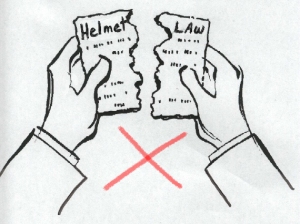There are a lot of voices and opinions calling for the repeal of the mandatory helmet law for cyclists, as well as calls to either remove existing cycling infrastructure or stop government spending on such programs, due to safety concerns. Both calls are unfounded.
When helmet legislation was enacted in 1991, the number of people cycling has flourished. There is no significant sign of widespread paradox opposition to the law, if there is, it is no more than mandatory helmets for motorcyclist or requiring to fasten seat belts in automobiles.
There are solid evidences of how helmet successfully protected cyclists from suffering fatal head injuries. The rate of head injuries have declined about 29% immediately following mandatory helmet legislation. The reduction was unrelated to any other changes occurring in cycling around the time. Put in plainly, helmets worked as intended.
Between 1991 and 2010, research shown that bicycle-related injuries (head injuries that were serious enough to require hospital admission) in New South Wales has declined. In addition, the increase arm injury rates reflect what is happening in the cycling environment, such as general safety improvements and the behavior of cyclists. By comparing arm and head injury rates highlights the importance of wearing a helmet.
Before the helmet law, the head-injury rate was consistently higher than that for arm injuries. But after the mandatory helmet law, head injuries dropped below arm injuries and the two gradually diverged. Arm injury numbers increased steadily at a rate of 3.3% a year (in a situation when cycling rates is increasing), yet head injuries stayed relatively flat. By 2006, the head injury rate had fallen to almost half that of arm injuries. In that time, arm injuries rose by 145%, yet head injuries rose by just 20% (in the past decade alone, cycling participants increased by 51%).

Lin


